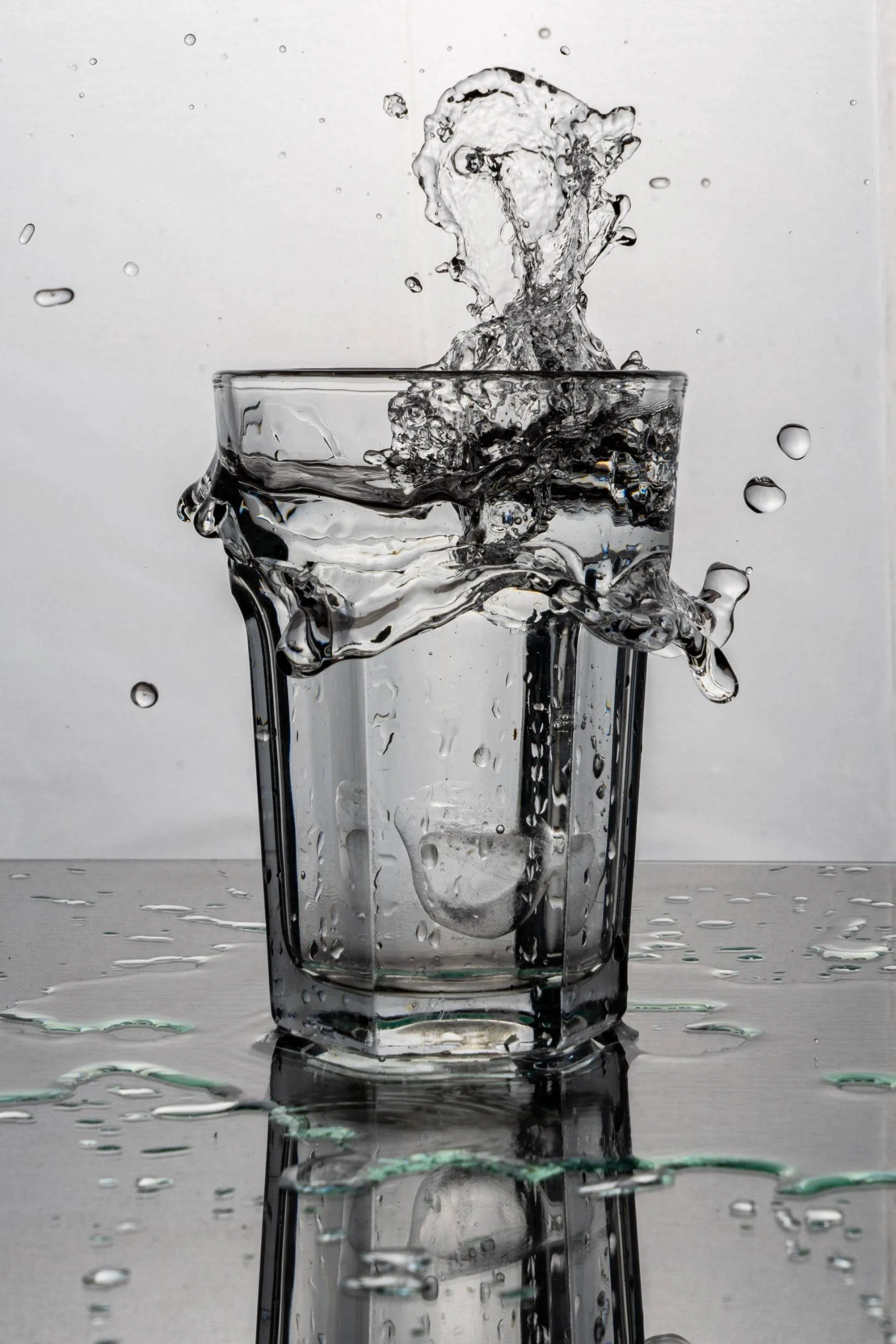Did you know that one of the most important things to do to improve health is to reduce your overall exposure to environmental toxins? Unfortunately, our environmental toxin load is increasing and enters our bodies in many ways, including our food, the water we drink and bathe in, and even the air we breathe. Taking proactive steps to reduce exposure, such as filtering your water, will have a positive outcome for overall health and wellness. Longevity Live Paid Content.
A brief history of water quality in America
In a 2022 survey, Aquasana found that 77% of Americans now filter their drinking water at home. This behavior has grown steadily over the last three years. The survey also revealed that 37% of people who filter their water at home do so because they don’t trust the quality of their water.
In fact, this was the third highest motivation for people who choose to filter their water. But what is driving this lack of trust in water quality and what can we do to address these concerns in our homes?
Impact of toxic industrial waste
To understand modern water quality concerns, it’s important to take a look at our history with water quality and pollution. In America, water pollution increased with the Industrial Revolution, when factories began releasing pollutants directly into rivers and streams. In 1948, the Federal Water Pollution Control Act was the first U.S. law to address water quality issues on a wide scale. Unfortunately, the legislation didn’t go far enough.
It wasn’t until 1969, when the Cuyahoga River in Ohio caught on fire from toxic industrial waste, that there was enough public outrage to move the needle in establishing landmark water quality legislation. Spurred on by the Cuyahoga River incident, congress made major changes to the Federal Water Pollution Control Act of 1948. It passed what is known today as the Clean Water Act.
Since the mid-twentieth century, we’ve made great strides in keeping pollutants out of our water and improving water quality across the U.S. However, there have been several incidents in modern times that have shaken people’s trust in our water quality. This indicates that there is still work to be done when it comes to guaranteeing safe, healthy water in every U.S. home.
The discovery of toxic contaminants in various U.S. communities, such as elevated levels of lead found in Flint, Michigan. In addition, the presence of PFAS in drinking water near military bases has renewed awareness of and concerns about the quality of our drinking water.
So what are America’s top water contaminant concerns of 2022?
According to Aquasana’s recent survey, lead, chlorine & chloramines, and bacteria, viruses, and cysts are America’s top water contaminant concerns in 2022. Let’s explore each of these contaminants to understand how they get into our water and what we can do to protect ourselves at home.
Lead
Lead comes up often in the water quality conversations. In fact, Aquasana found that 27% of respondents who said lead is their top water contaminant chose it because it is the contaminant they hear about the most in the news. In addition to the Flint, Michigan water crisis that rocked global headlines in 2016, a USA TODAY NETWORK investigation that same year identified nearly 2,000 additional water systems across the U.S. that had excessive levels of lead contamination. But how does lead get into our drinking water in modern times?
Lead can enter drinking water through plumbing or pipes that are made of harmful metal. Water becomes contaminated when lead pipes, plumbing, or faucets corrode and can be very dangerous because it is odorless and tasteless. Although lead pipes and plumbing were banned in 1986, older homes may still have them or traces of lead in their plumbing system. Even in small doses, this contaminant can cause an array of health issues.
These include damage to the brain and kidneys. It can also interfere with the production of red blood cells that carry oxygen around the body. Lead exposure is particularly dangerous for infants, young children, and pregnant women and has been linked to lower IQ in children.
Chlorine and Chloramines
Another contaminant category that is top of mind for Americans is Chlorine and Chloramines. Before water makes it to homes, it must go through a disinfection process. This is where it is often treated with chlorine or chloramines. This process kills any waterborne illnesses or bacteria in the water supply but does come with some downsides.
Chlorine, in particular, can create byproducts when dirt and germs react with it. These byproducts can affect the taste and smell of tap water. In some cases, it can make the disinfectant less effective. This then allows water to be reinfected as it travels through pipes and into the home. Chloramine, which is a solution of 5-parts chlorine and 1 part ammonia, is a popular disinfectant alternative to chlorine. It produces lower levels of byproducts and doesn’t have as strong of an effect on water taste or smell. However, it can cause irritation of the skin, hair, and eyes.
Bacteria, Viruses and Cysts
Thanks to COVID-19, concerns surrounding bacteria, viruses, and cysts in drinking water has increased in recent years. In 2022, Aquasana found that this is one of the top three concerns when it comes to water quality, and 40% of respondents cite the pandemic as the reason they are more concerned about bacteria and viruses in drinking water.
Although you can not get COVID-19 from the water there are still bacteria, viruses, and cysts that can get into your water supply. Chlorine-resistant cysts like cryptosporidium and giardia are parasites. They can come from contact with an infected animal, human waste, or contaminated raw fruits and veggies.
They can get into your meat during processing if the meat is not cooked at exactly 160 °F. Usually, when there are bacteria or cysts in water, there will be a water boil advisory. This can help kill the bacteria present. Another solution to kill bacteria that may be present in water is to use a water filtration system.
How can you improve your water quality at home?
Now that you are aware of and understand some of the most common modern-day concerns surrounding water quality, it’s important to explore ways to make sure the drinking water in your home is safe. By having clean, safe water, you’ll have less exposure to environmental toxins and thereby enjoy a life full of health and longevity.
Luckily, there are steps you can take to ensure you and your family have access to clean, healthy water in your home.
Start by understanding what is in your water
The first step to improving your water quality at home is to understand what contaminants might be in it. If your home uses municipal water, the first step you should take is to check your city’s water quality report. The water quality report comes out once a year and can be accessed online. The report will include information on source water, the levels of detected contaminants, and compliance with drinking water rules. If you are renting, many apartment complexes will have a copy of the water quality report available for tenants.
If a water quality report does not soothe your concerns or your home uses a private well, another great solution is to test the quality of your water directly. This can be done at home and there are many kits that can deliver results within 10 minutes. Testing your water is worth considering. This is especially true because potentially harmful contaminants, like lead, can enter your water after they leave the water treatment facility.

Photo by Bluewater Sweden on Unsplash
Choose a water filter that addresses your concerns
After identifying your water concerns, a great step you can take is to invest in a water filtration system. Water filters come in many shapes, sizes, and price points. If you are considering this option, it’s important to do your research because not all water filtration systems are created equally.
Things to consider when purchasing a water filtration system are if you rent or own your home, household water consumption, and the types of contaminants you are looking to remove. It is also essential to consider your budget and the maintenance of your chosen system.
Don’t skip out on home maintenance
Maintaining pipes and your home’s plumbing is also essential when it comes to making sure the quality of your home’s water is top-tier. Bacteria and other microorganisms can build up in pipes over time. This can potentially have a negative impact on your home’s water quality.
Another extremely essential thing to check for when maintaining pipes in the home is if your home has lead pipes. Lead pipes were popular in homes built before 1986. As such, some homes still have lead pipes or traces of this harmful contaminant in their plumbing.
The Future Looks Bright
Water contributes to our health and is essential for day-to-day tasks. As awareness grows, and we learn more about our water, Americans will continue to question the quality of the water in their homes. Luckily, there are ways to help soothe the woes associated with water quality. Many of these ways can be done at home. With new information about water quality emerging, the solutions are bound to grow. This will provide Americans with access to clean, healthy water in their homes.
Who is the Author?

Derek Mellencamp
Derek Mellencamp is the General Manager at Aquasana, a company that makes premium water treatment products including award-winning whole house, under sink, countertop, and shower filtration solutions.



![women [longevity live]](https://longevitylive.com/wp-content/uploads/2020/01/photo-of-women-walking-down-the-street-1116984-100x100.jpg)










